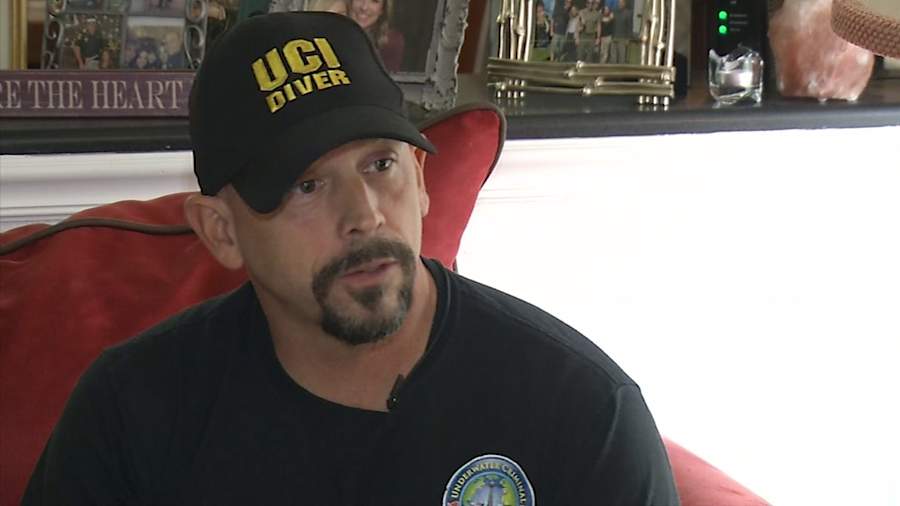ST. JOHNS COUNTY, Fla. – Imagine taking a dive into the St. Johns River and coming face-to-face with a treasure you never imagined you’d experience.
Thomas Keisler, a diver with Underwater Criminal Investigators, said his group was approached about three years ago by a local fisherman with a sonar image of a possible aircraft on the river bottom. Keisler said he first thought the aircraft may have been a drug runner plane, but he has discovered it was a military fighter believed to have crashed sometime between 1943 and 1946.
“The F4F Wildcat is one of the first aircraft to go against the Japanese during World War II, used against the Japanese in World War II,” Keisler said.
Keisler wants to keep some details under wraps, including the aircraft’s precise location and how deep it is underwater. Over the years, Keisler and his team have made several dives to the crash site. Keisler said it took time before they truly understood what was below the surface.
“You don’t really see anything,” Keisler said. “You see it through touch. You see it through feel.”
The artifacts within the wreckage helped reveal the mystery.
“We found the 50-caliber machine gun feeder. That was a dead giveaway that it was military,” Keisler said. “We’ve got bits and pieces of engine -- the engine with serial numbers on it.”
Keisler says the cockpit cover was fully intact, along with the aircraft’s canopy cover. Keisler says that would be considered the aircraft’s windshield today.
Artifacts recovered from aircraft.
Dozens more artifacts were found, including an oil cooler underneath the wing. Instruments found inside the cockpit were also in decent shape. Anyone interested in military history would be fascinated by their finds.
For Keisler, a turning point in his investigation was finding handwriting on the navigational plotter board.
“Back in WWII, they didn’t have computers to do this work for them. To navigate with, they had to hand write everything down,” Keisler said. “With the discovery of the handwriting, we were able to recreate his flight pattern, the pilot’s flight pattern.”
Even more unique, four fingerprints were found fully intact, like they were sealed in time. Keisler said the most likely scenario is the pilot got grease or oil on his hands during a pre-flight safety check.
“And transferred it on the navigational plotter board that they would carry in and out of the aircraft at the time,” Keisler said. “After the crash, the marine grove grew on top of the fingerprints and the pilot’s handwriting, ultimately protecting it.”

Keisler said the team has identified two potential pilots who would have been flying this plane. Investigations are still being done, but he says they looked through the history and found no living family. Keisler said the artifacts have been turned over to the Naval History and Heritage Command.
Keisler built a table model to give a better sense of what the aircraft currently looks like underwater. His goal is to eventually bring this treasure back to the surface.
To read more about the group Keisler is associated with, visit www.ucidiver.com.












